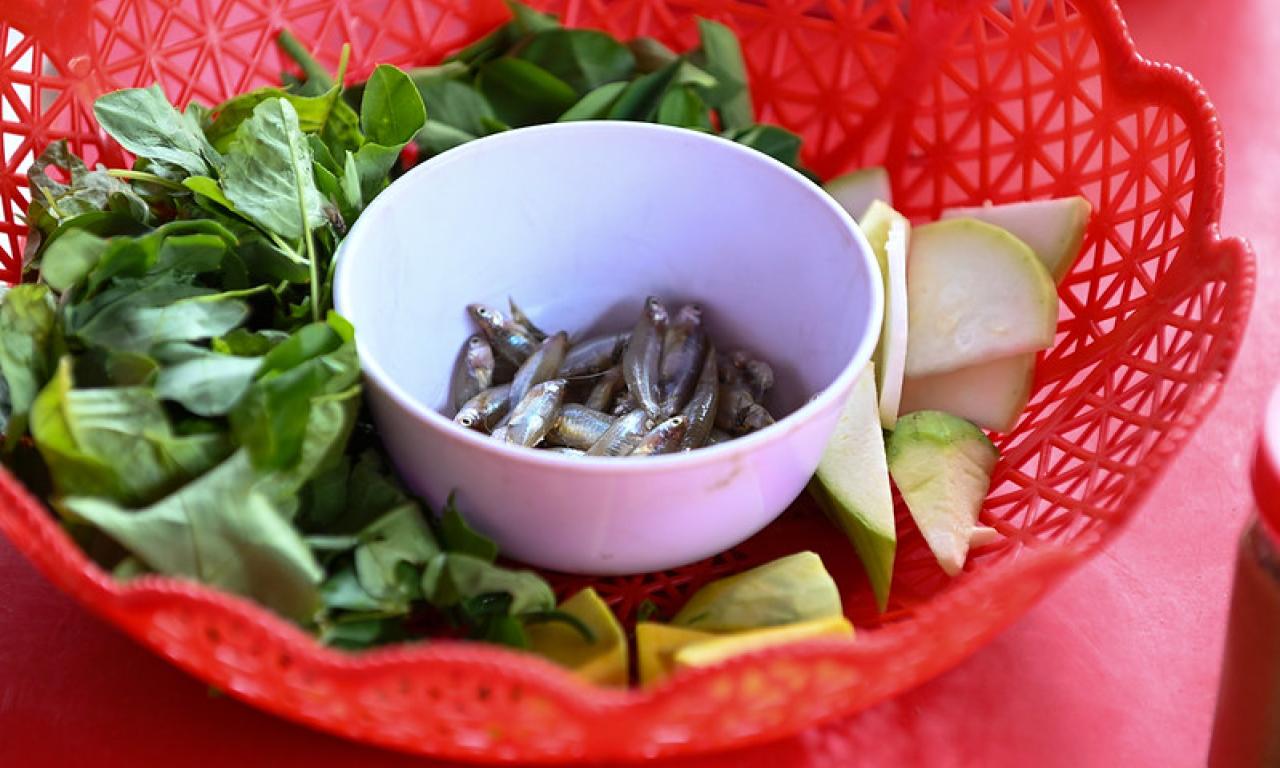
Global policymakers and development funders have been urged to think of fish and other aquatic species as a critical solution to food insecurity, and not just as a natural resource that supports livelihoods, in a newly-published paper by a group of multidisciplinary experts.
Global policymakers and development funders have been urged to think of fish and other aquatic species as a critical solution to food insecurity, and not just as a natural resource that supports livelihoods, in a newly-published paper by a group of multidisciplinary experts.
The paper, “Recognize fish as food in policy discourse and development funding,” is a united call to prioritize aquatic foods in transforming global food systems toward more nutritious and sustainable diets for all. By harnessing the potential of aquatic foods, the global development community can get on track to achieve food and nutrition security, urged scientists from WorldFish, Michigan State University, Duke University, Harvard University, World Bank and Environmental Defense Fund, among others.
Fish and other aquatic foods offer a life-changing opportunity for the hundreds of millions of undernourished people around the world, particularly in low- and middle-income countries. However, they are largely missing from key global food policy discussions and decision-making, said Shakuntala Thilsted, research program leader for value chains and nutrition at WorldFish.
The UN Sustainable Development Goal 2: Zero Hunger, does not mention fisheries or aquaculture by name, nor does it offer specific guidance on aquatic food systems. Aquatic foods also appear underrepresented in international development funding priorities, such as by the World Bank, the paper found.
The number of malnourished people in the world will increase from 690 million today to 841 million by 2030 if current trends continue — an estimate not accounting for effects of the COVID-19 pandemic. Fish provide 17 percent of the animal protein consumed globally and are rich in micronutrients, essential fatty acids and protein essential for cognitive development and maternal and childhood health, especially for communities in low- and middle-income countries where fish may be the dominant source of key nutrients.
“Aquatic foods have a unique and critically important role to play, alongside land-based crops and livestock, for transforming global food systems to address major global challenges related to the sustainable development agenda, and in particular the nutrition and public health discourse,” Thilsted said.
The WorldFish 2030 research and innovation strategy is centered on the concept of aquatic food systems, looking at how their elements, activities and outcomes contribute solutions to the global sustainable development agenda. This paper contributes to this perspective by examining how viewing aquatic species in a food system perspective can lead to innovative policies and investments that cross land-based crops and livestock in a joint effort to find research-based solutions to malnutrition, said Eddie Allison, WorldFish’s research chair for equity and justice in the blue economy.
Harnessing the potential of aquatic foods to nourish the world

The research lays an agenda for enhancing the role of aquatic foods in addressing hunger and malnutrition, incorporating input from diverse academic disciplines as well as professionals working in international development and environmental sustainability, said Abigail Bennett, assistant professor in the Center for Systems Integration and Sustainability in the Department of Fisheries and Wildlife at Michigan State University.
“The fact that a unified message of ‘fish can be doing much more for global food and nutrition security, and here are some steps to move from discourse to action’, emerged from such diverse perspectives makes me optimistic for accelerated progress in this area in the near future,” she said.
The paper identified four pillars of action to harness the potential of aquatic foods, these pillars are:
- Improve metrics. There is currently a paucity of metrics to assess and communicate the contributions of fish and other aquatic species to food and nutrition security. Governments and researchers can collaborate to develop better tools to raise the profile of fish in broader food and nutrition security policies and investment priorities.
- Promote nutrition-sensitive aquatic food systems. Current management regimes emphasize the “maximum sustainable yield” for a given fishery. Managing for “optimal nutritional yield” would focus on not just rebuilding and conserving fish populations — an important goal in and of itself — but also on sustainably managing nutrient-rich fisheries.
- Govern distribution. Availability, access and stability are key features of food and nutrition security. Even though aquatic foods are one of the most traded food commodities in the world, there is limited information about their distribution and links to nutrition security. There is also a need to promote equitable distribution of capital and property rights to access fisheries, particularly that recognize the importance of small-scale fisheries and roles women play in fishing and aquaculture sectors.
- Situate fish and other aquatic sources in a food systems framework. Policymakers need the tools to conceptualize fishing and aquaculture as components of the food systems framework. An aquatic foods framing requires a better understanding of the connections among production and distribution, terrestrial agriculture and planetary health.
